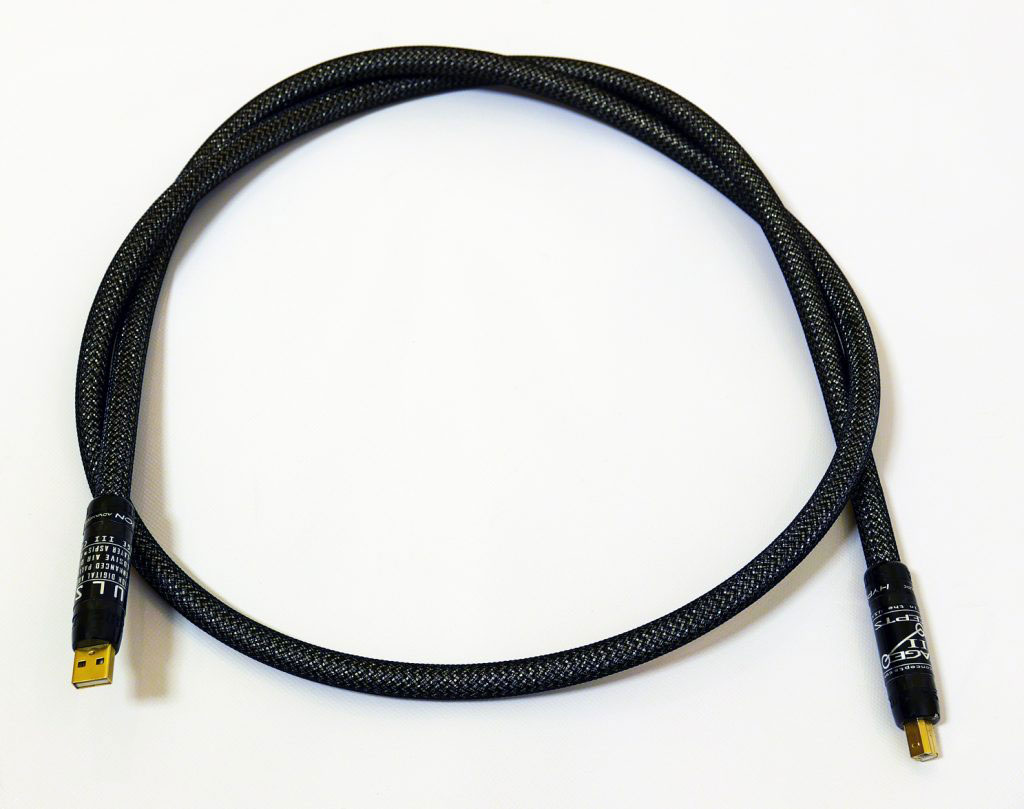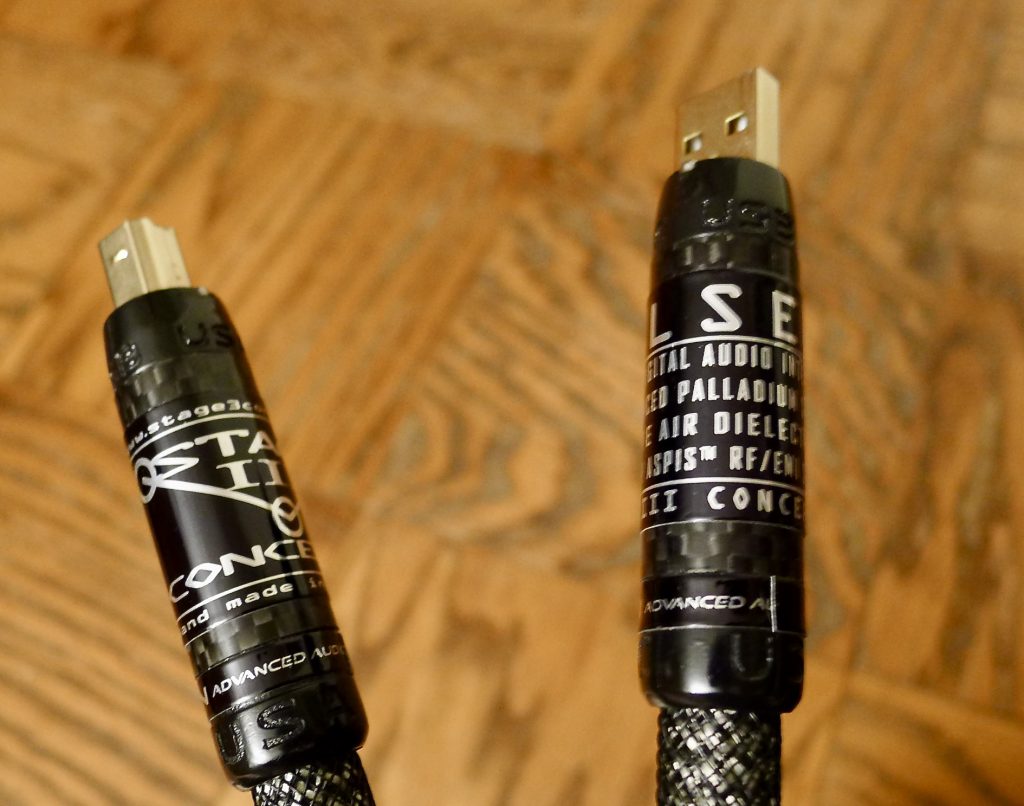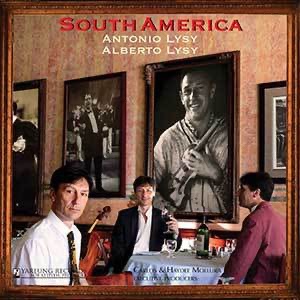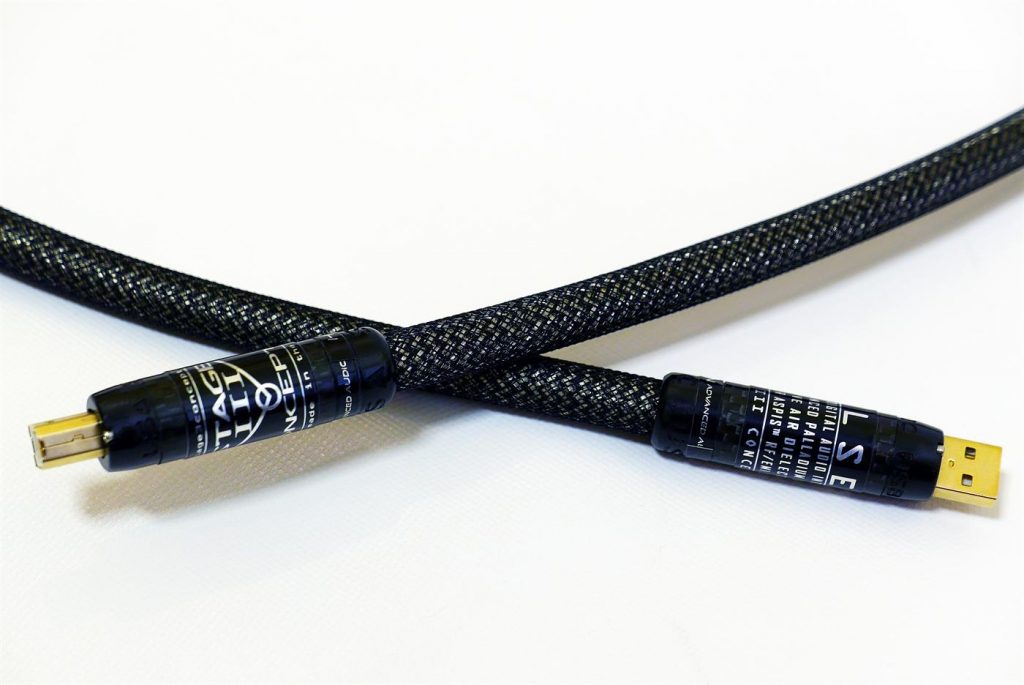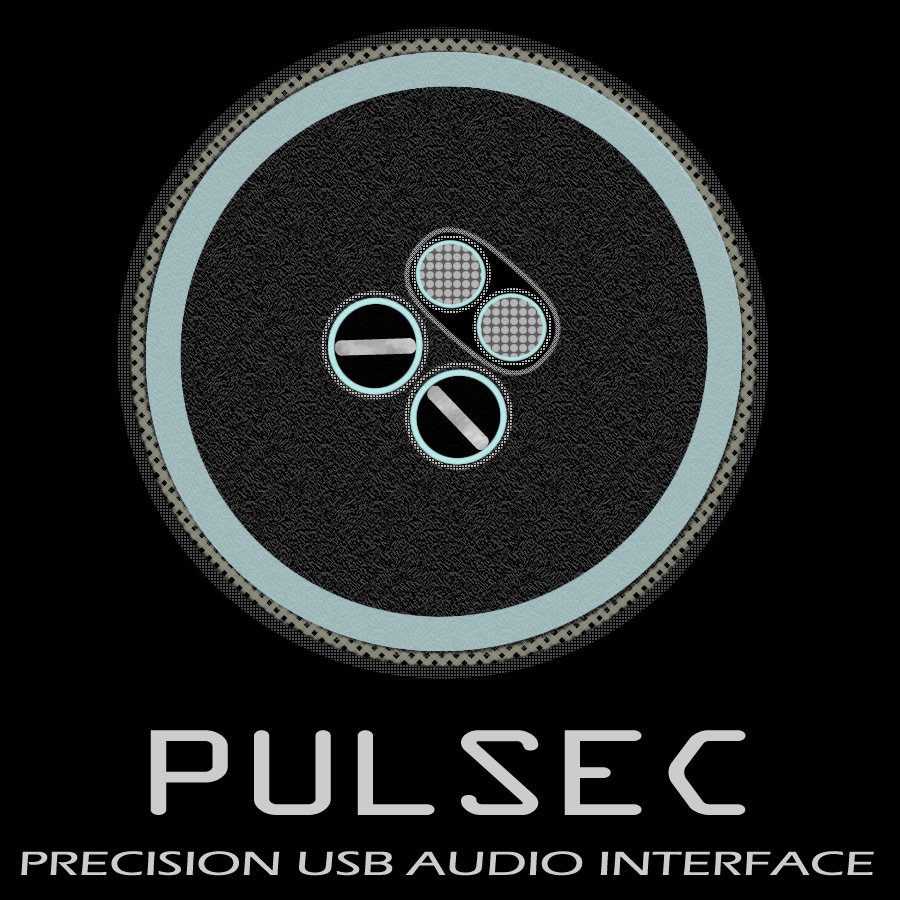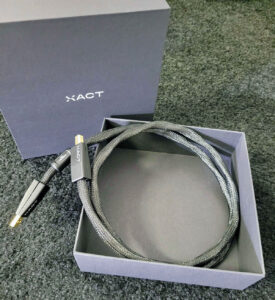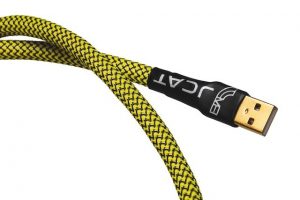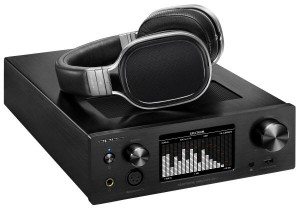The other day I had one of those funny moments when I did something out of character. These used to be infrequent, but now that I'm retired from the day job, there are more. Should I be worried? Or does life get more amusing when you exit the rat race and it slows down?
This time it was in response to an upset in the horse race I've been running with digital music. At this point the board shows USB well behind Ethernet, which trails the CD transport. (Which is behind vinyl, who is not running today. Odd how the second coming of vinyl is proving simply unbeatable.) But the audio bookies I know maintain heavy odds on USB.
One fan in particular, Brian Ackerman over at Aaudio, claims it can't be beat—if done right. He always stresses that big if. When I told him my results, he was quick to retort, "With music servers everything counts, from the computer that sends the file, to the USB cable carrying it, to the input receiver, and USB processing circuitry in the DAC…" His list kept on going.
Soon he got to the nitty-gritty. That MacBook Pro laptop I'm using? "Come on, it's not in the same league as a dedicated computer." He uses the Aurender W20. The USB cable I'm using? "You have to get something serious." He has the top-of-the-line model from Stage III Concepts at $6700 per meter. My CH Precision C1 DAC? This he was OK with and actually complimented as one of the best. To sum up, there were too many compromises to take my results seriously.
Dazed and Confused
I was deflated, I could not dispute anything he said. I thought I had gotten a head start on this because it was configured under advisement from CH Precision and now I wasn't so sure. At this point I turned to the web to educate myself, but that only muddied the waters further. There are a zillion ways to put together a USB front-end, far from any consensus on what's optimum.
Well, I may be new to music delivered in file format, but I've been around the block a couple of times and the Golden Rule still applies. You can make whatever claims you want—it's all subject to what goes down in the listening room. That said, it would be easy enough to put one of his points to the test, just get me a top notch cable. Brian offered to send the Pulsec USB from Stage III Concepts ($3000/m).
I cranked up a current fave recording, South America, a showcase for cellist Antonio Lysy, which I have on Redbook CD and DSD 64 file (Yarlung 80167). A couple of years ago I caught Lysy in a performance with a tango troupe—WOW, what a show—and immediately acquired his earlier Yarlung recording, Antonio Lysy at The Broad: Music from Argentina (on LP). That one went on to win a Latin Grammy. Yarlung is a newish label with uncompromising production values that has rapidly ascended as word has gotten out.
Track one, "O canto do cisne negro," by Heitor Villa-Lobos, is a duet featuring Lysy's cello plus harp. It sounds pretty amazing; I'd give it a 10/10 rating, using Michael Fremer's scale for music and sound. Now we're ready to swap in the Pulsec and run the horses again. On your mark, get set, go! USB breaks from the gate strong…they're rounding the bend…he's nose-to-nose with Ethernet… Whoa! It's too close to call. We'll have to wait for the judges' video review. This was when my "ha-ha" moment occurred. Forgive me for finding it all so amusing.
I'm not too surprised by this outcome/I'm very surprised by this outcome. On the one hand, I kinda knew what the Pulsec would do. On the other hand, I wasn't expecting that much of a difference. If this were an interactive narrative, you would get to choose your own plot line.
The Stage III Sound
Sure, it's mundane to observe that a cable from Stage III behaves like a Stage III product. Mundane, yes, but happily so, if you are familiar with the Stage III signature. Having reviewed their interconnects, speaker cables, and power cords, I'm familiar: I just didn't know how it would translate to a USB, a new type of cable. It turned out no different. What am I so happy about?
A Musical Cable
The Stage III sound is about tone and body. Warm, smooth, liquid, very full, with a low-end that is prominent and powerful, and treble that is nicely extended without edge. I would be remiss if I didn't point out the timbres are more fully developed than most cable brands. This musical cluster of attributes makes Stage III the antithesis of analytic and dry.
A Resolving Cable
But that doesn't mean the measurement side of the audiophile ledger is neglected. If that's what you're into, the Pulsec will give you insight on par with the best. It clearly presents the unnaturally wide wingspan of the harp on "O canto do cisne negro," the low strings imaging in the center of the soundstage, the treble ones spread over towards the right. The engineers had to use several spot mics to create this. (And it always makes me ask why? It would have been easier and the results more natural if only one mic was used. Pianos, even drum kits, routinely get the same treatment.) The scoring for the harp's upper register is a repeated flow of arpeggios, while the low strings lay down a running bass line rather like the left hand often works on a jazz piano. There's a difference in how the strings are plucked. The top ones generate a sharp transient and you hear individual notes; the low strings are softly stroked and somewhat muted. As you can see, the Pulsec provides detail galore.
The cello, for its part, is a thing of beauty. The big tone, body, and timbre leave no doubt this is a fine instrument. The detail and inner life similarly convey the musician's skill and sense of the composition. A fabulous instrument played by a talented musician—this is the formula for an exceptional performance. It is what separates the quotidian player from the true artist.
Those of us pursuing the higher-end—the connoisseur level—need to hear these things. We have trained our ears by regularly attending classical concerts. At home, we compare what goes down in the soundroom to what we heard last night in the hall. You know, there actually is a grail: the high end has always pursued the sound of unamplified acoustic instruments in a good hall. It is a real world reference, not an arbitrary construct that lives in your head.
Success at achieving this in the home is iffy. Wires and components vary on this gradient, just as they do on any other. None completely succeed. I'm especially sensitive to accurate tone and timbre, and I'm always on the lookout for wires that trigger my memory of the gold standard. One thing is certain, however: without exception, it does not come cheaply. The Pulsec costs three times as much as the USB cable I had been using. That figure doesn't bother me because the Pulsec triggers the reference more strongly. (And the cable I had been using costs almost three times as much as the one before it. Again, the enhanced connection with the reference was worth every penny.)
That's what the high end is supposed to be about, right? Yet, there are fewer and fewer audio reviewers talking about this. In the old days, it was the only thing we talked about. For many audiophiles there is no real world reference—their priorities, their ideal sound, lies elsewhere. They're missing the forest for the trees. At any rate, they will be happier with a less colorful, more straight-up wire.
USB PULSEC schematic
Design and Construction
The Pulsec USB ($3000/m) is a handsomely constructed cable. Like all Stage III offerings, it is extravagantly over-built, every part is custom-designed and handmade, in-house. It sits below the outlandish Xphynx USB ($6700/m), with its vacuum dielectric and palladium alloy conductors.
The black and silver braid outer casing is as large as some interconnects and fairly stiff. Care should be taken navigating sharp corners. Here's a description from the distributors' website:
PULSEC digital cables have been specifically tailored to the precise requirements of digital signal transmission in all its forms for audio use (S/PDIF, BNC, AES/EBU, USB). Air dielectrics for digital applications are ideal in eliminating conductor/insulation interactions and avoiding sonic deviations. Further protection is provided by multiple layers of shielding and mechanical damping, to further subdue interferences and distortions. Proper spacing between conductor and shield achieves optimum propagation velocity.
PULSEC DIGITAL CABLES: Cryo-treated, custom slow-extruded silver/palladium AeroStrand Ultra™ ribbon conductors. Coaxial configuration with silver braid return. Ultra-thin high performance PFA Teflon air-tubes. ASPIS™ shielding technology: full coverage plated copper and conductive carbonized Nylon braid layers. Multi-layer construction with silica/ceramic/ferrite mechanical damping/shielding layer.
Conclusion
Music servers and streaming may be the latest delivery vehicles, but that doesn't change the rules of the game. Rule #1: in high end audio every link in the chain matters. Rule #2: refrain from passing judgment on a product until you have actually heard it.
Circumstances allowed me to easily test the two pieces of my USB music server configuration that were in the cross-hairs. I'll just mention in passing that when I compared my MacBook Pro laptop to a well-reviewed dedicated computer, it held its own. The Mac shouldn't be dismissed out of hand.
The upscale Stage III Pulsec cable, on the other hand, performed as advertised, and single-handedly elevated USB playback in my contest. It delivers the goods that digital playback sorely needs, a list admittedly heavy on the musical side. What it does to facilitate the bond between listener and performance is what brings us pleasure. It does not come cheaply, but it is worth every penny. (Stage III cables do that for analog playback as well.)
It may not be everyone's cup of tea. I've met guys who don't talk about the emotional side of listening. They focus on other aspects of the performance and will be happier with something less colorful, more straight up.
You know, I wish Stage III made an Ethernet cable.
Pulsec USB Link
Retail: $3000/1 meter; additional .5 meter is $900
Stage III Concepts
Distributor
Aaudio Imports
Parker, CO 80134
303.264.8831




